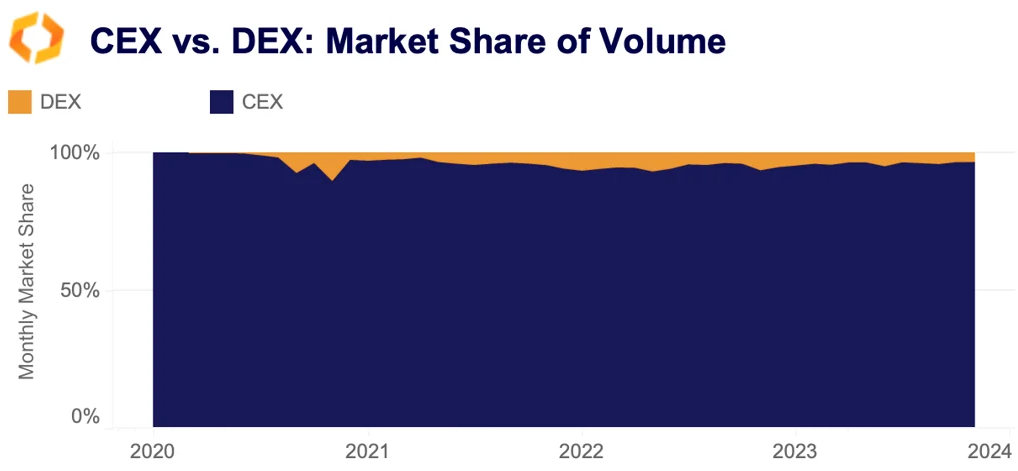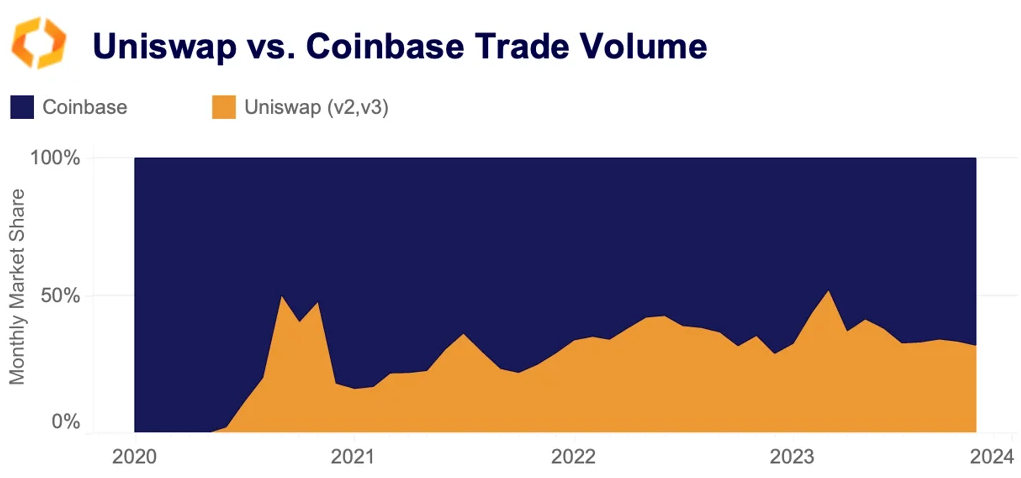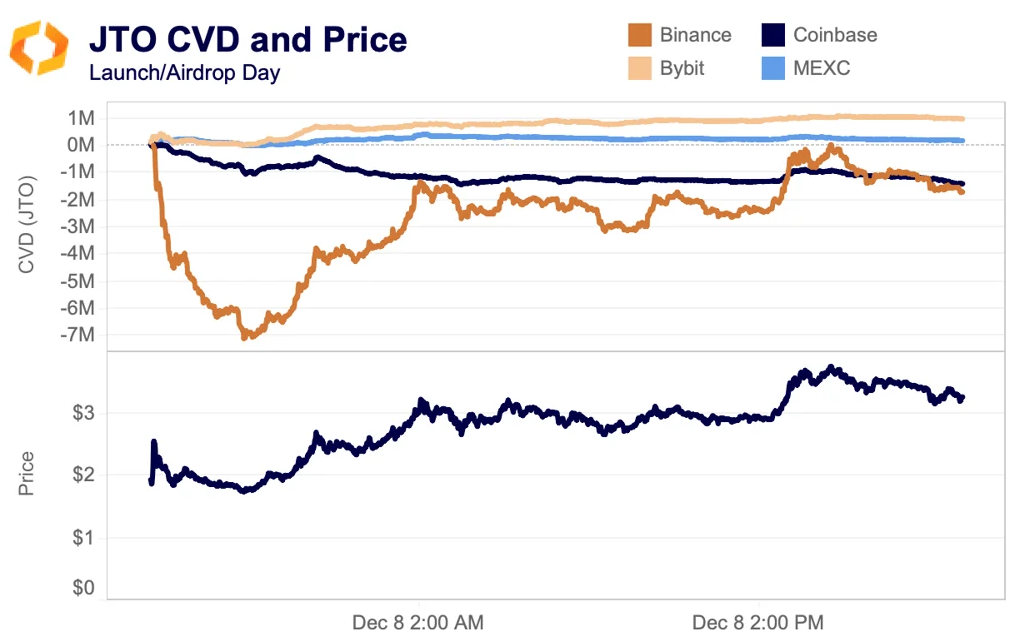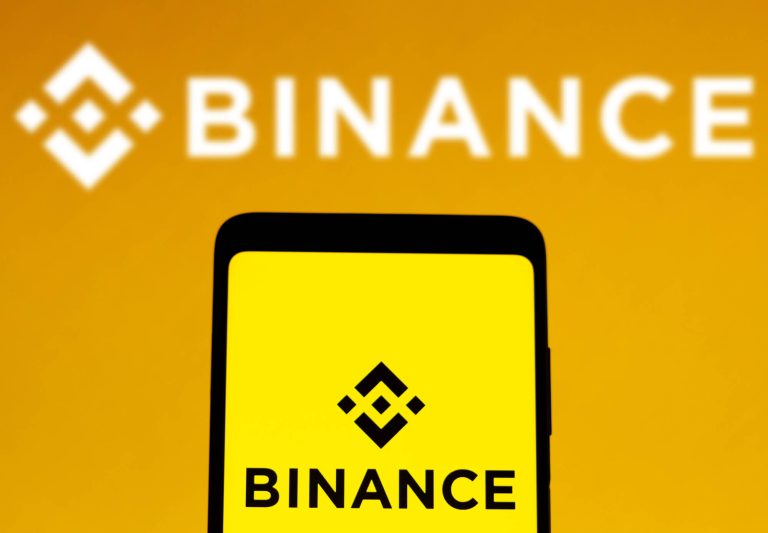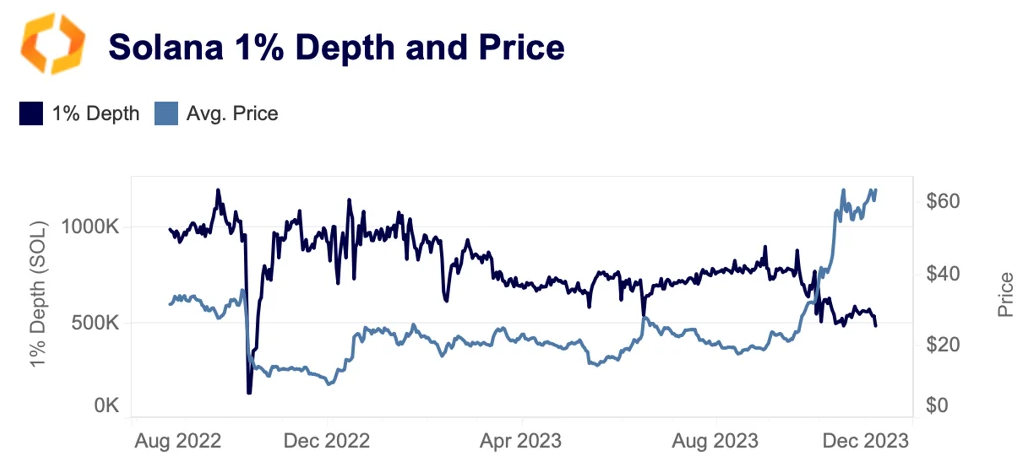A summarizing review of what has been happening at the crypto markets. A look at trending sectors, liquidity, volatility, spreads and more. The weekly report in cooperation with market data provider Kaiko.
BTC is trading just below $42k as speculation mounts that the Fed could soon start cutting interest rates. Last week, Société Générale listed its euro stablecoin on Bitstamp and issued a green bond on Ethereum. In addition, memecoins saw a surge in activity and Robinhood launched crypto trading in the EU.
DEX volume is picking up
We've experienced an exhilarating turnaround in crypto markets over the past month, but has this overflowed to DeFi? The quick answer is: sort of. DEX volume has always been significantly lower than CEXs, but the recent rally has caused an uptick in activity, albeit at a slightly slower pace across the most liquid platforms including Uniswap and Curve on Ethereum and Pancakeswap on BNB Chain.
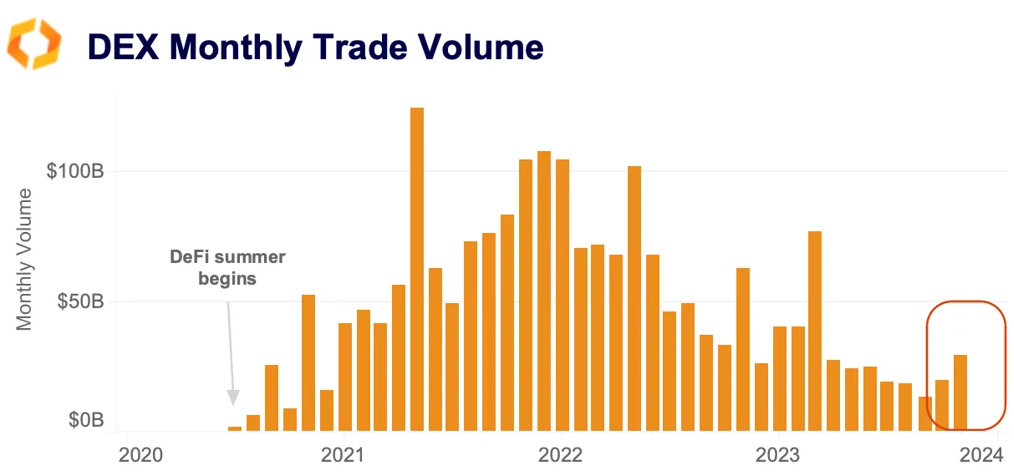
DEX monthly trade volume rose to $29bn in November, recovering from a multi-year low hit in September. This is still far below all time highs of more than $124bn reached in May 2021. The market share of DEX to CEX trade volume has also decreased over the past year, closing November at just 3%, down from 5% in January.
All time highs of 10% were hit in November 2020, during peak DeFi enthusiasm. This suggests DEXs were more impacted by the low market participation we observed since the FTX collapse. Although the largest DEX Uniswap saw its market share retreat relative to Coinbase, it still remains fairly significant at 40%.
The increase in DEX activity is also reflected by elevated lending rates, which we covered last week. Higher lending rates, especially for stablecoins, mean that more loans are being taken out, often for trading purposes.
JTO airdrop selling is quickly absorbed
Jito – the liquid staking and MEV protocol on Solana – made waves last week as it airdropped its token, JTO, to users. 90mn tokens were immediately made available to claim by airdrop recipients, many of whom then rushed to Binance to sell their allocation. In the first three hours of trading, there was a net of 7mn tokens sold, barely pushing price down from $2 to just under $1.75.
After this initial wave of selling was exhausted, CEX buying began in full, with Binance rapidly reversing its selling trend, while Bybit and MEXC have shown consistent buying since launch. Coinbase has been the odd one out, notably enabling trading at roughly the same time as the other exchanges, but registering consistent net selling.
New top 50 token has just 5k USD in market depth
Bittensor (TAO) has rallied from under $50 in mid October to over $350 at the time of this writing as AI-related tokens have outperformed. However, much like other altcoins, its liquidity has not tracked its price increase. Despite a market cap of over $2bn, the token is still not traded on larger exchanges like Binance or Coinbase, with the vast majority of its volume on MEXC and some on Uniswap. The newly minted top 50 token has just $5k in bid depth within 0.1% of the mid price, with slightly more on the ask side. It has been encouraging to see crypto volumes pick up in recent months, but the ongoing lack of liquidity suggests that altcoin volatility is likely to continue.
SOL market depth hits YTD low
Solana (SOL) resumed its rally last week hitting a 19-month high, defying fears of a price decline due to the selling of FTX’s significant SOL holdings. While prices have rallied from $18 to $75 since early September, market depth in native units (denominated in SOL) has been on a steady downward trend, declining by around 50% to 467k SOL. USD prices and depth expressed in native units have often moved in the opposite direction as market makers actively manage their exposure based on multiple factors including price changes, volatility expectations, and forward-looking price assessments. However, their correlation isn't constant, especially in times of market turbulence.
It is notable that the last time SOL liquidity across CEXs was at similar levels, SOL prices were 30% higher than the current level. Interestingly, we observe high volatility in SOL ask-side market depth on U.S. exchanges throughout November.
In particular, the 0.5% ask-side market depth varied by more than 200k SOL in just one hour on Coinbase between November 8-10. On Kraken, dislocation occurred between November 15-22. This could suggest that a lot of market buying was expected on those exchanges at the time.


